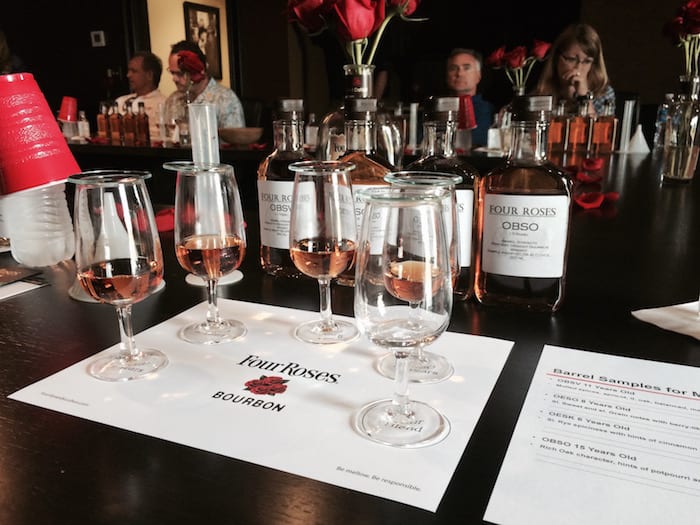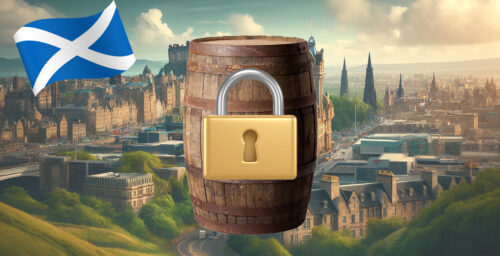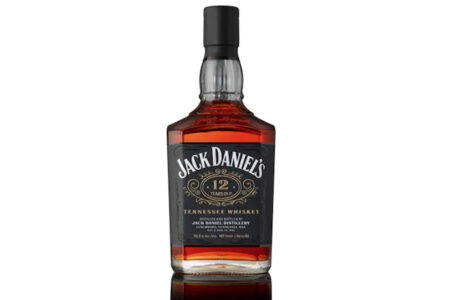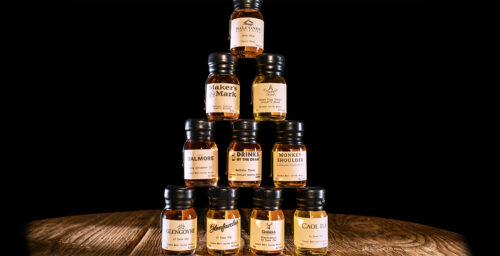Multiple morning shows, magazines, and online articles all tout the benefit of a morning workout. If you exercise first thing upon rising, loads of magic follows you throughout the day. You’re promised to be in a better mood with more energy, have lower blood pressure, and even sleep better. You’ll be the essence of self-discipline, a beacon of light to your family, friends, and coworkers.
I take this advice very seriously and developed a strict morning training routine. No coffee. No breakfast. No interruptions. This is my me time. I owe it to myself.
Roll out of bed. Gulp down a pint of water. Pop open eight to ten bottles of whiskey.
After many years, I discovered the system that works best for my palate. It’s not just about the time of day I can taste “the best.” It’s also the attempt to provide a general consistency to what and how I taste. Pulling flavors and aromas for tasting notes is a subjective activity, so I do my best to control my own environmental influences.

Not everyone can (or should) start tasting whiskey as the sun rises. However, exercising these “muscles” on a regular basis can, in fact, enhance your overall imbibing experience. Teasing out the subtle aromas and flavors in your nightly pour adds another layer of enjoyment and relaxation. When your mind is busy breaking down which baking spices or what kind of nut or which variety of tropical fruit flavors are dancing on your tongue, it is not thinking about tomorrow’s to do list or emails.
The mindless drink is replaced with a moment of meditation.
How to start tasting instead of just drinking
It should come as no surprise that developing your senses is a marathon, not a sprint. Just as you wouldn’t attempt 26 miles on your first run, you probably won’t pick up delicate floral or elusive rancio notes the first time you concentrate on your glass. Also, we’re going to start on a treadmill, not the hills and streets.
Deep dive into your pantry
Take a good look at a flavor wheel and you might notice you have a dozen or more of those descriptors right in your kitchen. Go through your spice cabinet and smell and taste each of the dark baking spices individually. Cinnamon, nutmeg, clove, and allspice are frequent fliers in tasting notes. These are flavors from eugenol, a phenolic compound derived from the charred oak barrels. Pull out your maple syrup, coconut oil, dill, and mint while you’re in there.
Next, go through your cupboards in search of dried fruits. Look for dark cherries, currants, raisins, figs, and dates. Add them to your shopping list if you don’t have them. Smell them and taste them and then do it again. The barrel is doing its magic when it’s producing these flavors and aromas and you’re missing out on that pixie dust if you stop at identifying the basic vanilla and caramel notes.
Head to the grocery store
Give your produce department a fresh look. Sure, you’re likely familiar with green apple, melons, and lemon zest. But when is the last time you had a mango or apricot? Get some peaches and pineapple, try guava and plums and all the berries. Cook them. Smell them and taste them. Finding these scents in the bouquet helps tell the story of fermentation through aldehydes and esters.
While you’re at the market, cruise down the baking isle. You can’t identify something as absurd as marzipan in your whiskey if you’ve never tasted marzipan. Molasses, anise, almond extract, and all the nuts… in your cart. Dried coconut, ginger, and dark chocolate should go in there, too. Coconut might be easily overlooked amidst the pungency of other flavors, but these oak lactones are a workhorse in rounding out the spirit over time.
Finally, hit the pharmacy shelves. Look for camphor, menthol, acetone (nail polish remover), castor oil, and rubbing alcohol. No tasting these, obviously, but familiarize yourself with the aromas. The smell of band-aids can mean the spirit is “headsy.”
If you’re feeling particularly industrious, you can hit the hardware store on your way home. Knowing the aromas of wood polish, cedar sawdust, or turpentine might help you identify a young whiskey. Mothball scents indicate faults you’ll want to stay away from. Lavender, geranium, honeysuckle, and rose aromas come from esters formed during fermentation.
Basically, get in the habit of smelling everything. Everything you eat. Everything you drink. Everything you touch. Smell it.
Sensory kits
I won’t deep dive into the various sensory kits available out there. Mostly they’re quite expensive and slightly abstract. If you’ve advanced to having your partner blind you on the pantry spices, maybe start to look into the investment. They can be helpful in identifying faults, but the likelihood that you’ll encounter a faulty whiskey is fairly slim unless you’re buying your whiskey in the woods. Stick to your kitchen, your tool shed, and your garden to build the most impactful (and mostly edible) sensory memories.
Sniff it. Then sniff it again.
You may notice we haven’t even begun to talk about tasting the whiskey yet. There’s plenty of instruction out there for that. But telling you how to taste isn’t especially helpful if you’re not capable of identifying what you taste. Like all other lofty goals, this one takes concentration, time and practice.
Maintaining exceptionally sharp and focused senses of smell and taste isn’t necessarily mandatory for the average whiskey consumer. But you’re not average, are you?



